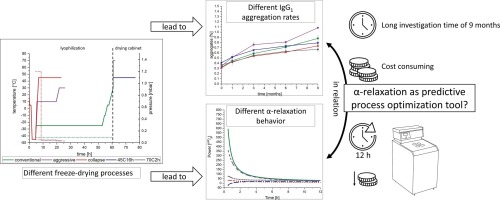Gießenpeptid Relaxation
Understanding Gießenpeptid Relaxation
Gießenpeptid relaxation is a fascinating area of study within molecular biology, specifically concerning peptides and their role in physiological processes. Peptides, being short chains of amino acids, can exhibit a wide array of biological functions and activities. **Gießenpeptid** itself is known for its relaxant properties, influencing various bodily functions. This section will cover the biochemical mechanisms that underlie Gießenpeptid relaxation, including its implications in various therapeutic areas.
Biochemical Mechanisms of Gießenpeptid
The mechanism by which Gießenpeptid induces relaxation can primarily be attributed to its interaction with specific receptors in the body. These receptors can influence smooth muscle contraction and relaxation. Upon binding, Gießenpeptid stimulates a signaling cascade that results in the relaxation of smooth muscle tissues, which is crucial in managing conditions like hypertension and other cardiovascular diseases. This peptide works by inhibiting contractions caused by other stimulatory hormones and is considered a potential therapeutic target for developing new treatments.

Clinical Implications and Research
Research surrounding Gießenpeptid has expanded over the years, unveiling its potential applications in clinical settings. Studies have demonstrated that Gießenpeptid could play a significant role in the treatment of cardiovascular issues due to its relaxation properties. For instance, experiments have shown its effectiveness in reducing blood pressure through vasodilation. This mechanism not only improves blood flow but also offers a supplementary approach to existing cardiovascular drugs.
The Role of Gießenpeptid in Physiological Processes
Gießenpeptid relaxation is not limited only to cardiovascular health but extends to various physiological processes as well. This section will delve into specifics about how Gießenpeptid affects different systems in the body, contributing to overall health.
Impact on the Digestive System
Gießenpeptid relaxation can significantly affect the digestive tract. By promoting relaxation in gastrointestinal smooth muscle, it helps to alleviate symptoms associated with conditions like irritable bowel syndrome (IBS) and dyspepsia. The peptide assists in easing abdominal discomfort and enhances motility without compromising the digestive process. This effect on the digestive system underlines its utility as a health supplement aimed at improving gastrointestinal functionality.
Neuroendocrine Interactions
The neuroendocrine system’s interplay with **Gießenpeptid** is a burgeoning area of research. Preliminary findings suggest that this peptide may influence hormone release, mediating various physiological responses. For example, Gießenpeptid could modulate stress hormones, thus contributing to a sense of relaxation and low levels of anxiety. Such insights have propelled inquiries into using Gießenpeptid as an adjunct treatment for stress-related disorders.

Applications of Gießenpeptid in Therapy
With numerous health benefits, Gießenpeptid holds promise for therapeutic applications. This section will explore its potential uses in health science and possible future trends in peptide therapy.
Developing Novel Therapies
The therapeutic landscape is rapidly evolving, and peptides like Gießenpeptid are at the forefront. Drug development utilizing Gießenpeptid involves creating synthetically modified versions to enhance pharmacokinetics and efficacy. By optimizing these properties, future medications could more effectively target diseases linked to muscle contractions or stress responses, thereby broadening the scope of treatment options available.
Complementary Therapies
Gießenpeptid may also be used alongside traditional therapies to improve overall efficacy. Its natural relaxation properties could complement existing medication regimens in treating cardiovascular diseases, gastrointestinal conditions, or anxiety-related disorders. By providing an added layer of support, healthcare providers can address patient conditions more holistically.
Key Takeaways
- Gießenpeptid plays a pivotal role in relaxing smooth muscle tissues, impacting cardiovascular and digestive health.
- The peptide may influence neuroendocrine functions, offering potential benefits for stress-management therapies.
- Research continues to explore innovative therapeutic applications of Gießenpeptid, highlighting its role in drug development.
FAQ
1. What are the physiological effects of Gießenpeptid?
Gießenpeptid primarily causes relaxation in smooth muscles, positively affecting cardiovascular health by reducing blood pressure and enhancing circulation. It also supports digestive health by easing gastrointestinal contractions. These physiological effects underscore its potential as a new therapeutic agent.
2. Is Gießenpeptid effective for stress relief?
Yes, Gießenpeptid may help alleviate stress-related symptoms. By modulating hormone release in the neuroendocrine system, it contributes to relaxation, making it a potential adjunct treatment for stress and anxiety disorders.
3. Can Gießenpeptid be used in developing new medications?
Absolutely. Gießenpeptid is emerging as a valuable target for drug development, particularly in creating synthetic variants that enhance its therapeutic effects. The research aims to reformulate these peptides for more effective treatments.
4. How does Gießenpeptid affect gastrointestinal disorders?
Gießenpeptid is known to alleviate symptoms associated with gastrointestinal disorders by promoting smooth muscle relaxation. This helps in easing conditions like irritable bowel syndrome (IBS), ultimately improving digestive comfort and overall function.
5. What are the future prospects for Gießenpeptid therapy?
Future prospects for Gießenpeptid therapy are promising. Ongoing research may uncover broader applications across various health conditions, aiming to integrate it into standard treatment protocols and improve patient outcomes through innovative therapies.
